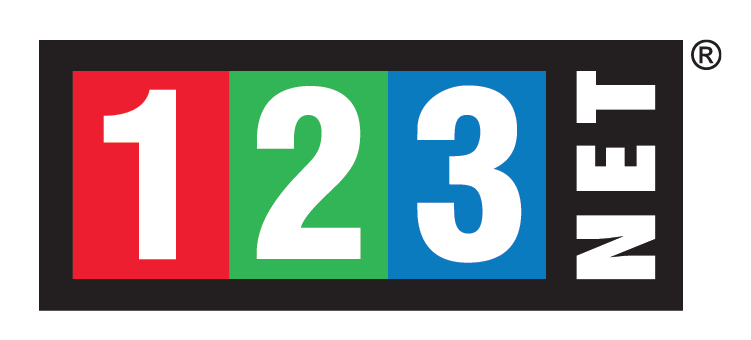
Ottawa County leverages $16M for countywide internet coverage. Learn more:

As the way we use technology has evolved from opening files on floppy disk drives to cloud computing, so has the demand for internet connectivity. The way education, business, health care, and social interaction are increasingly being conducted makes it clear high-speed internet service is no longer a luxury – it is a necessity both now and into the future.
But broadband service in Ottawa County continues to be inconsistent – many areas lack service, experience poor service, or residents simply can’t afford high-speed internet. Ottawa County is actively working to address these persistent gaps in high-speed internet service through a new Digital Inclusion Strategy.
Get Involved!
Follow 123NETS's Update Center for Ottawa County
123Net, Ottawa County's partner for fiber infrastructure development, has created a webpage to share information about the ongoing broadband project. Residents are encouraged to join 123NET's email list to stay updated on construction plans and current maps. Please note that current plans are preliminary and will be updated periodically throughout spring of 2024 as they are refined.
Learn MoreLearn About Our Partners
-
Next Steps
Current Efforts

In spring 2024, Ottawa County and broadband partner 123NET received final grant approvals for the state’s Realizing Opportunity with Broadband Infrastructure Network (ROBIN) grant. Approximately $9.7 million in state funds, paired with $4.3 million in matching funds from the County and $2.2 million from 123NET, will be allocated to build 250 miles of fiber, improving access for nearly 6,000 residents.
Although the County had planned for more funding – $7.5 million in ARPA dollars were initially set aside for broadband expansion – refinements made by the Michigan High-Speed Internet Office reduced the scope of this specific project. DSI will continue to pursue other avenues to plug coverage gaps and leverage the remaining $3.5 million originally earmarked.
Preliminary Timeline
- 2022 – Application Creation
- Spring 2023 – ROBIN Grant Application Submitted
- Winter 2023 – Contract Approved and Grant Accepted
- Spring & Summer 2024 – Design, Planning, Outreach
- Fall 2024 – Begin Construction
- 2025 & 2026 – Marketing/Installation
- 12/31/2026 – Deadline for grant funds to be spent
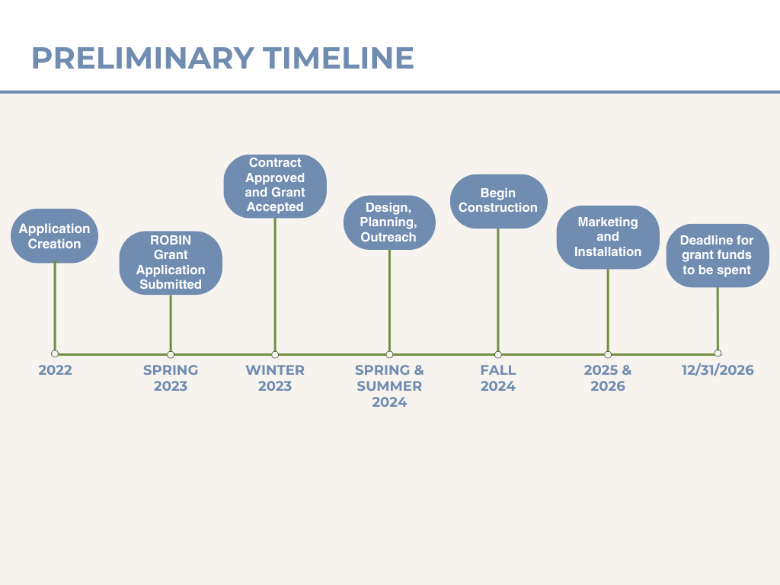
Ongoing Efforts
The ROBIN grant will get the ball rolling on fiber construction, but further funding will be needed to address the households that were not eligible. The next grant Ottawa County will be seeking is from the Broadband, Equity, Access, and Deployment Program (BEAD). The map challenge window will run from March 25th to April 23rd (2024) and residents can visit challenge.merit.edu to improve FCC maps, which will aid the county in increasing the likelihood of receiving BEAD funding.
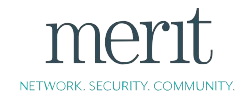
-
Broadband FAQ
What is Broadband?
Broadband refers to high-speed internet access that is always on and available. According to the Federal Government, broadband speeds must be faster than a download speed of 25 megabits per second and an upload speed of 3 megabits per second - 25/3 mbps. We know that technology has already moved on from that speed, and the now widely accepted and expected speeds are 100/20 mbps.
Why do we need it?
Extensive research was conducted by the Department of Strategic Impact over the past several years to demonstrate that there are significant gaps in reliable broadband internet coverage in Ottawa County. The Executive Findings Report showed that 10.5% of households had no internet access and 74.3% had service below 100/20 mbps. The 250 miles of fiber and enhanced fixed wireless coverage will provide improved access to nearly 6,000 residents.
How much are we paying?
Ottawa County and 123NET formed a public private partnership to secure the ROBIN Grant funding. To maximize the potential of the Ottawa County ARPA funding, the County put forward $4.3M to leverage $16M.
- Ottawa County ARPA: $4.3M (another $3.2M is being reserved to leverage BEAD funding)
- 123NET: $2.2M
- State of Michigan ROBIN Grant Award: $9.7M
- Total Project: $16M fiber construction project
What is ROBIN?
ROBIN stands for Realizing Opportunity with Broadband Infrastructure Networks. This grant program is operated by the State of Michigan to fund middle mile broadband internet infrastructure. Applicants must form public-private partnerships and target underserved and unserved areas. Ottawa County applied for the grant with 123NET and was awarded in the second round of funding.
Am I going to get coverage?
Maybe! This project will bring new or improved speeds to over 3,000 priority households. Throughout Spring and Summer 2024, 123NET and Ottawa County will work together to develop final engineering plans. Check out the 123NET website for Ottawa County to see what infrastructure may be located near your address. If your address is not included in the current project plans, please rest assured these are ongoing efforts and we will continue to advocate for and expand broadband availability.
-
Broadband Data Collection Survey Results
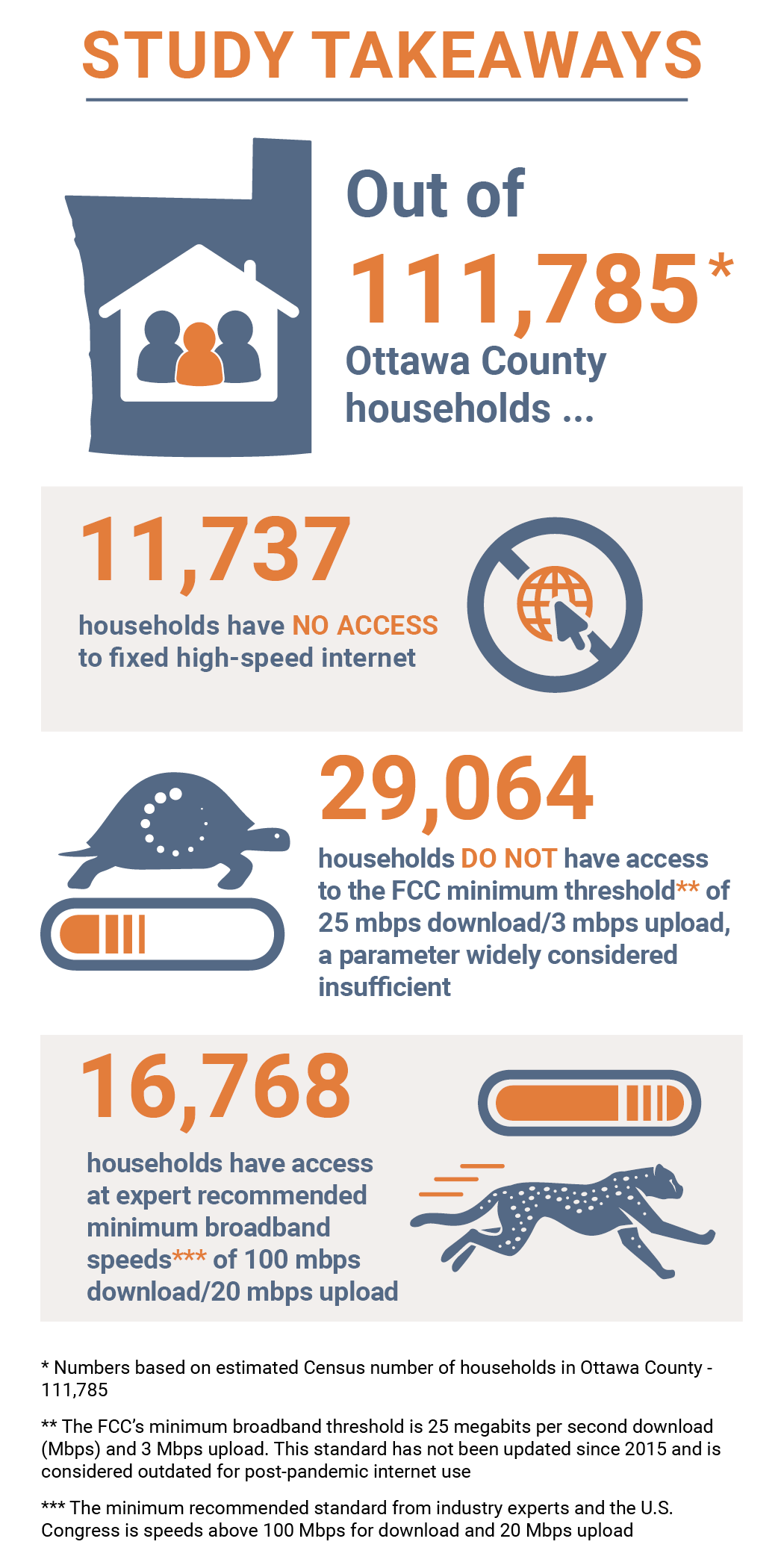
Broadband Data Collection Survey Results
Phase I of the Digital Inclusion Strategy - data collection - was completed in spring 2022.
Initiative partner and survey creator Merit Network carefully reviewed survey and speed test data collected through the end of 2021 from County residents and businesses and released a detailed report.
The information gathered clearly demonstrated many more people are underserved than reported by the FCC and others.
With this refined data, Ottawa County and its Digital Inclusion Strategy partners are now moving on to Phase II: developing infrastructure plans, feasibility analyses of these plans, preliminary engineering designs, and a cost model.
Explore the Data
- Broadband
Data Collection - Executive Findings Report
This PDF document summarizes the survey process and offers key takeaways in easy-to-digest graphics and charts.
- Broadband
Data Collection - Topline Report
This PDF document offers a more comprehensive look at survey speed and broadband availability data, as well as an overview of respondents' opinions and assessments of Internet service.
- Broadband
Data Collection - Executive Findings Report
-
What About Satellite Internet Service?
Satellite internet service is available from a handful of telecommunications companies in our area. Prices for conventional satellite run at least $15-$20 per month more than conventional broadband services, and typically have slower download speeds. Additionally, inclement weather and heavy foliage can interfere with satellite signals.
What about Starlink?
High-tech Low-Earth Orbit (LEO) satellite wireless service are being invested in and deployed by tech giants such as Elon Musk and Jeff Bezos. It's true Starlink is a gamechanger for millions without access worldwide. But compared to fiber connections from conventional internet service providers (ISPs), Starlink service is sub-par and expensive. Learn why Ottawa County is focusing on ground-based solutions in our Starlink vs. Fiber guide.
-
Where We've Been
Since the beginning of high-speed internet, Ottawa County has been involved in improving service and building infrastructure. The Ottawa County Board of Commissioners has actively supported enhanced broadband for residents and businesses for more than a decade. The County has had multiple successes with expanding broadband into previously underserved areas through collaborative public-private partnerships. Here’s a closer look:
Expansion of Cellular and Data Coverage
In the late 2000s, the County partnered with Sprint (now part of T-Mobile) to upgrade and expand its wireless broadband network. In exchange for Sprint investing $1 million to enhance and expand high-speed wireless service to the County’s rural areas, local officials, whenever possible, assisted with expediting permitting, zoning approvals, and site assessments needed to upgrade and expand the existing wireless network.
Eventually, the County worked with Verizon and AT&T to fill coverage gaps by constructing cell towers in underserved areas. Cellular and data coverage in more rural parts of the County improved significantly.
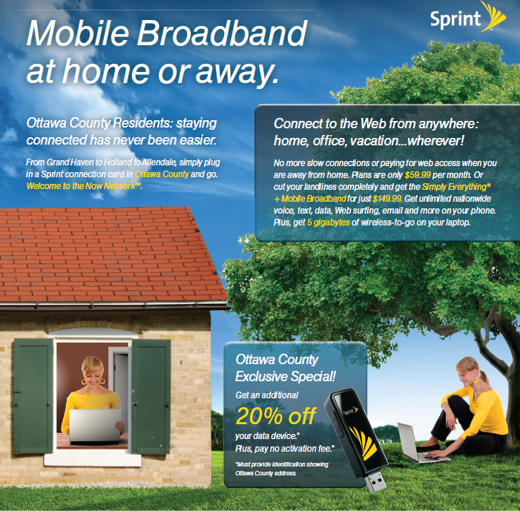
Hotspot Device Lending Initiative

Beginning in 2018, the County partnered with three area libraries to initiate a Mobile Hotspot Device Lending Initiative. This program allows residents to check out the portable devices from their local library for on-the-go access. With the support of this Department, eventually all nine Ottawa County libraries received a Library of Michigan Library Services and Technology Act (LSTA) grant to expand the program, making the devices available for loan to the county’s more than 283,000 residents. The program has been a success. During the first year (October 2019-October 2020) two libraries showed their devices were circulated 479 times!
Connect Michigan Report
In 2018, in an attempt to better understand regional challenges, over a dozen counties in West Michigan – including Ottawa – partnered with ConnectMichigan, a nonprofit working to expand broadband.
A community technology assessment was performed to identify deficiencies and opportunities for improving local broadband access to advance economic, social, and educational opportunities for families, businesses, and community institutions.
A comprehensive Community Technology Action Plan was created. Unfortunately, the results of that effort did not provide the level of granularity needed to thoroughly and accurately understand the county’s true broadband landscape. These issues are further explained below under “Continued Issues”
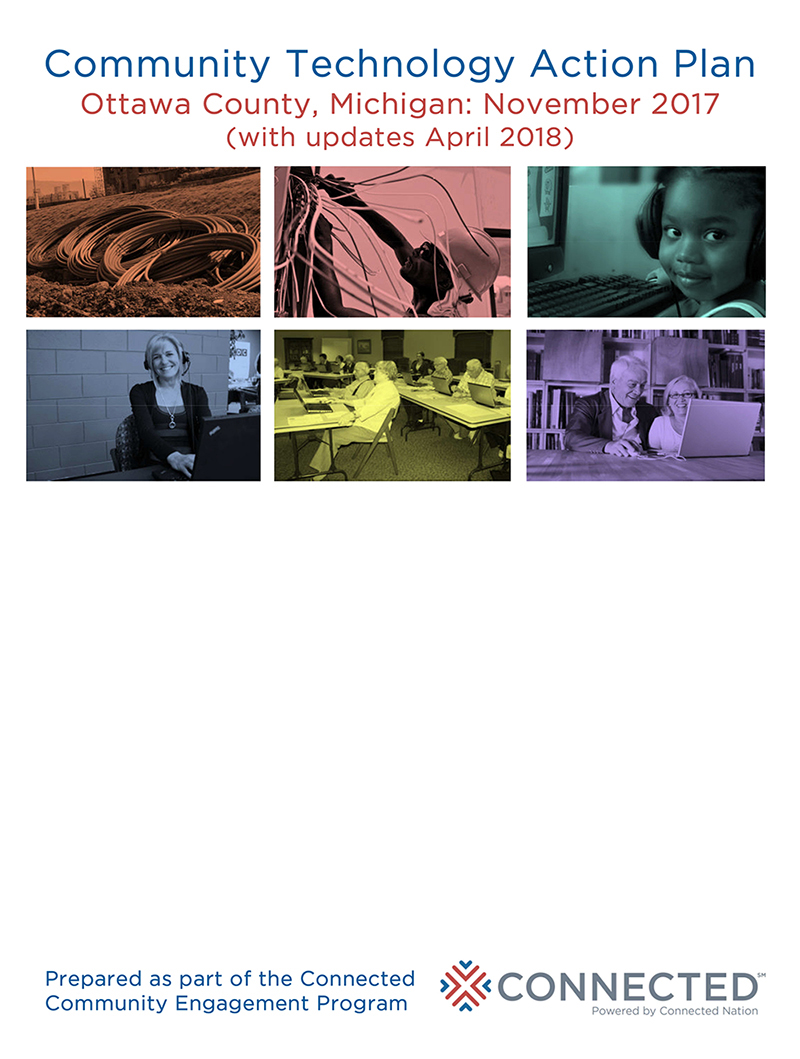
-
Continued Issues
Although the County has taken an active role in improving high-speed internet access, these efforts alone haven’t solved the problems we face.
Consider:
Community Technology Action Plan Held Back by Inaccurate Data
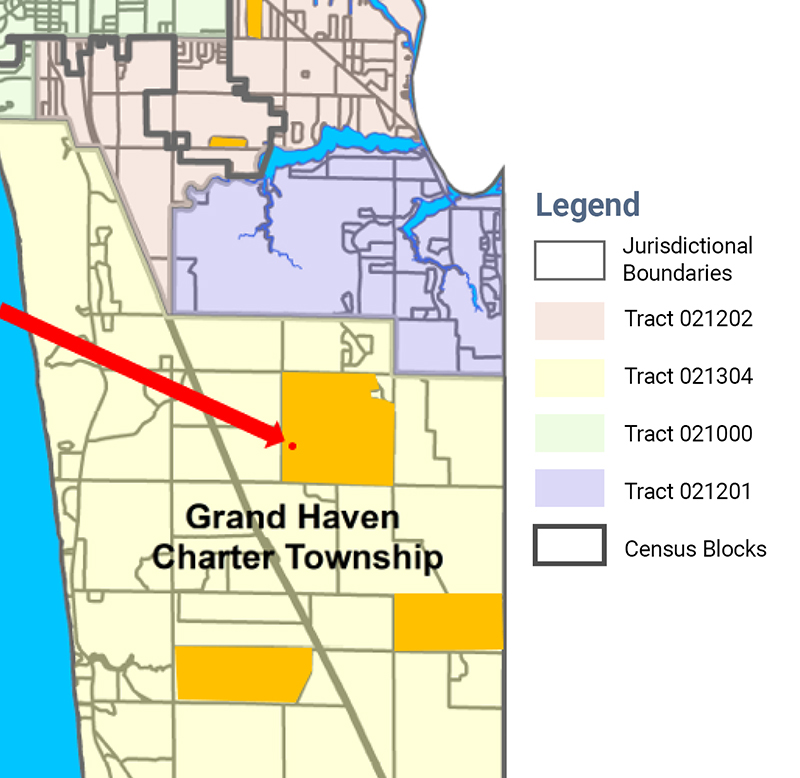
The FCC maintains maps that illustrate broadband coverage across the Country based on Census blocks. Census blocks vary widely in size based on population density. For example, a Census block in the city of Holland can be dramatically smaller than a block in a less densely populated township. As the map at left shows, if one home in a Census block has access, FCC maps represent that the whole block has access, skewing the data. Because the Action Plan was based on Census block data, it failed to drill down far enough to truly determine any gaps in connectivity. Additionally, inaccurate FCC maps have delayed and in some cases disqualified the County from qualifying for grants to plug these gaps in service.
Wireless Internet is not always practical
Data caps and limited upload/download speeds cannot consistently provide the average consumer the needed capacity to work and learn remotely. Library mobile hotspots are a boon to many, but cannot be a permanent solution. The FCC describes broadband as any service that provides 25 megabits per second downloads and 3 megabits per second uploads. This standard hasn’t been updated since 2015. The minimum recommended standard are downloads of 100 mbps and uploads of 25 mbps. The mobile hotspots available from Ottawa County libraries use 4G/LTE technology, which, according to a 2019 report from Ookla, an international mobile and broadband network researcher, averages 38 mbps download speed and 9.5 mbps upload speed, far short of the accepted minimum standards mentioned above.
However, while wireless as a last mile solution (e.g. wireless service into homes) is not always practical, as wireless technology improves and infrastructure solutions are developed to expand reliable broadband speeds to unserved rural areas, wireless can offer advantages when combined with other technologies to cost-effectively extend services. Ottawa County’s evolving infrastructure solution to extend broadband countywide will likely involve the use of wireless for local infrastructure needs as necessary and practical.

-
The Digital Inclusion Strategy
Because of the inaccurate data, national providers, state and federal regulators are under the mistaken impression that reliable, high-speed broadband service is consistently available and reliable in all corners of the County. Our citizens tell us otherwise. For several years, through our comment form at the bottom of this web page as well as through other sources, the public has had the opportunity to report difficulties with high-speed internet to this Department. A countless number of residents have reported they either don’t have access, their access is unreliable, or is too expensive.
In light of these continued reports and the static efforts of private-sector providers to address our county’s gaps in coverage, the County and its strategic stakeholders are moving aggressively to improve and expand broadband service in order to achieve universal, affordable access for all.
A FOUR-PHASE PLAN
The intended purpose of the Digital Inclusion Strategy is to ensure all area residents and communities have access to affordable and reliable broadband internet service, necessary equipment, and digital literacy training.
This four-phased plan includes ...
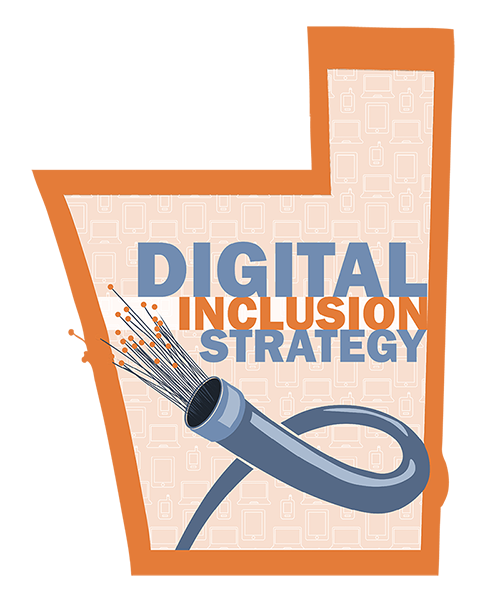
PHASE I
DATA COLLECTION
Collect the necessary data to inform our decision-making to effectively address gaps in access, affordability, and digital literacy.
Primary objectives
- Refine broadband-availability maps
- Improve understanding of how residents use broadband and what they need
- Improve understanding of barriers to broadband access by both connected users and those currently without high-speed internet

PHASE II
ANALYSIS
By utilizing data from Phase I, develop a robust plan defining the actions necessary to address gaps in access, affordability, and digital literacy throughout the County.
Primary Objectives
- Prepare broadband infrastructure plans that address physical access issues
- Develop initiatives that address cost and equipment problems preventing residents from accessing broadband
- Develop digital literacy public outreach and education initiatives for residents
- Develop strategies to overcome regulatory hurdles inhibiting the expansion of reliable and affordable broadband infrastructure

PHASE III
INTERMEDIARY SOLUTIONS DEPLOYMENT
Put into motion Phase II plans to ensure Ottawa County deploys the infrastructure and support programming necessary to achieve universal, affordable broadband access for everyone.
Primary Objectives
- Through a public-private partnership, build broadband infrastructure to connect areas of County lacking reliable and affordable high-speed internet
- Connect with local partners to help subsidize, as needed, the cost of broadband access for those unable to afford it
- Deploy digital literacy programs

PHASE IV
Ongoing Transformation
Monitor and address ongoing and evolving needs among residents and businesses to ensure they have access to the broadband infrastructure needed to compete today and tomorrow.
Primary Objectives
- Survey/evaluate the public at least every three years to gauge broadband use and anticipate future needs
- Continue developing solutions to ensure County offers the most robust infrastructure and programming needed for residents and business to thrive into the future
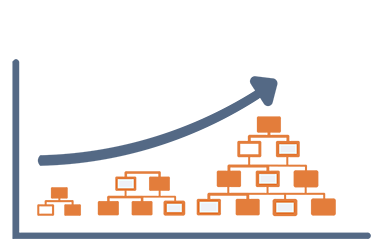
Current Partners
-
OAISD
Involved from beginning to develop strategy -
Urban Wireless Solutions
Aiding to strategize and develop a broadband system for County
Data Collection Steering Committee Members
Mike Rowher CIO and Assistant Superintendent
Ottawa Area Intermediate School DistrictPete Hoffswell Superintendent of Broadband Services
Holland Board of Public WorksMandy Cooper Director of Strategic Initiatives
Lakeshore AdvantageJames Brooks Business Leader, Regional Strategist, Philanthropist John Nash Supervisor
Spring Lake TownshipHelen Dietrich Owner
Ridgeview Orchards and Chester Township ClerkRic Gajewski Tech Expert and Resident Advocate
Tallmadge TownshipBecca Edema Virtual Health Manager
Spectrum HealthAaron YoreVanOosterhout Research Manager
GVSU's Johnson CenterJeff Williams Director, Community Data and Research Lab
GVSU's Johnson CenterVicky Thelen Director, Data & Analytics
GVSU, Information TechnologyDoug Weber President
Urban Wireless SolutionsPaul Sachs Director
Ottawa County Department of Strategic ImpactPhase I Funding Partners
To help cover the costs associated with the Phase I Data Collection effort, Ottawa County is being supported by a diverse group of partners, including:
Grand Haven Area Community Foundation Grand Haven Township Holland City Holland Township Hudsonville City Lakeshore Advantage Loutit District Library OAISD Ottawa County Farm Bureau Patmos Library Polkton Township Robinson Township Spectrum Health The Chamber of Commerce — Grand Haven, Spring Lake, Ferrysburg West Coast Chamber of Commerce West Michigan Lakeshore Association of Realtors Zeeland Board of Public Works Zeeland City -
Resources
-
Everyoneon.org
Use this website to find low-cost internet and affordable computers in your area. - 21st Century Infrastructure Commission
In March 2016, Gov. Rick Snyder created the 21st Century Infrastructure Commission. The Commission developed a list of 110 solutions to improve Michigan’s infrastructure and enhance the quality of life for all Michiganders. - Speed Test
Test the speed and performance of your internet connection here.
-
Everyoneon.org
-
Affordable Connectivity Program
Do you or someone you know need help paying for high-speed internet service? The Affordable Connectivity Program, a new FCC initiative provides discounts on monthly service and devices to help families and households access broadband. It replaces the temporary Emergency Broadband Benefit Program (EBB).
Eligible households can receive discounts of up to $30 per month on broadband internet service, as well as a one-time discount of up to $100 toward a laptop or desktop computer or tablet bought through a participating provider.
How to Apply
Applying for the Affordable Connectivity Program is a two-step process. Eligible households must both apply for the program and contact a participating provider to select a service plan.
- Submit an application. To complete an application online or by mail, please visit GetInternet.gov, and scroll down to "Apply". If you do not have access to the internet, please call 877-384-2575.
- Contact a participating provider to select a plan. To find a provider near you that participates in ACP, click here. Please note that some providers may ask you to complete an alternative application.
More Information
What if I'm already enrolled in the Emergency Broadband Benefit Program?
The temporary Emergency Broadband Benefit Program (EBB) has been replaced by the permanent ACP. If you were enrolled in the EBB Program before Dec. 31, 2021, you will continue to receive a $50 per month discount toward internet service through March 1, 2022. After the transitionary period, beginning March 1, 2022, your discount will drop to $30 per month. Households that qualified for EBB due to loss of income because of a job loss or furlough beginning Feb. 29, 2020, or by meeting other eligibility criteria for a participating provider's COVID program will need to requalify for ACP.
For more information on the program and eligibility requirements, please visit affordableconnectivity.gov/do-i-qualify
-
What is Broadband?
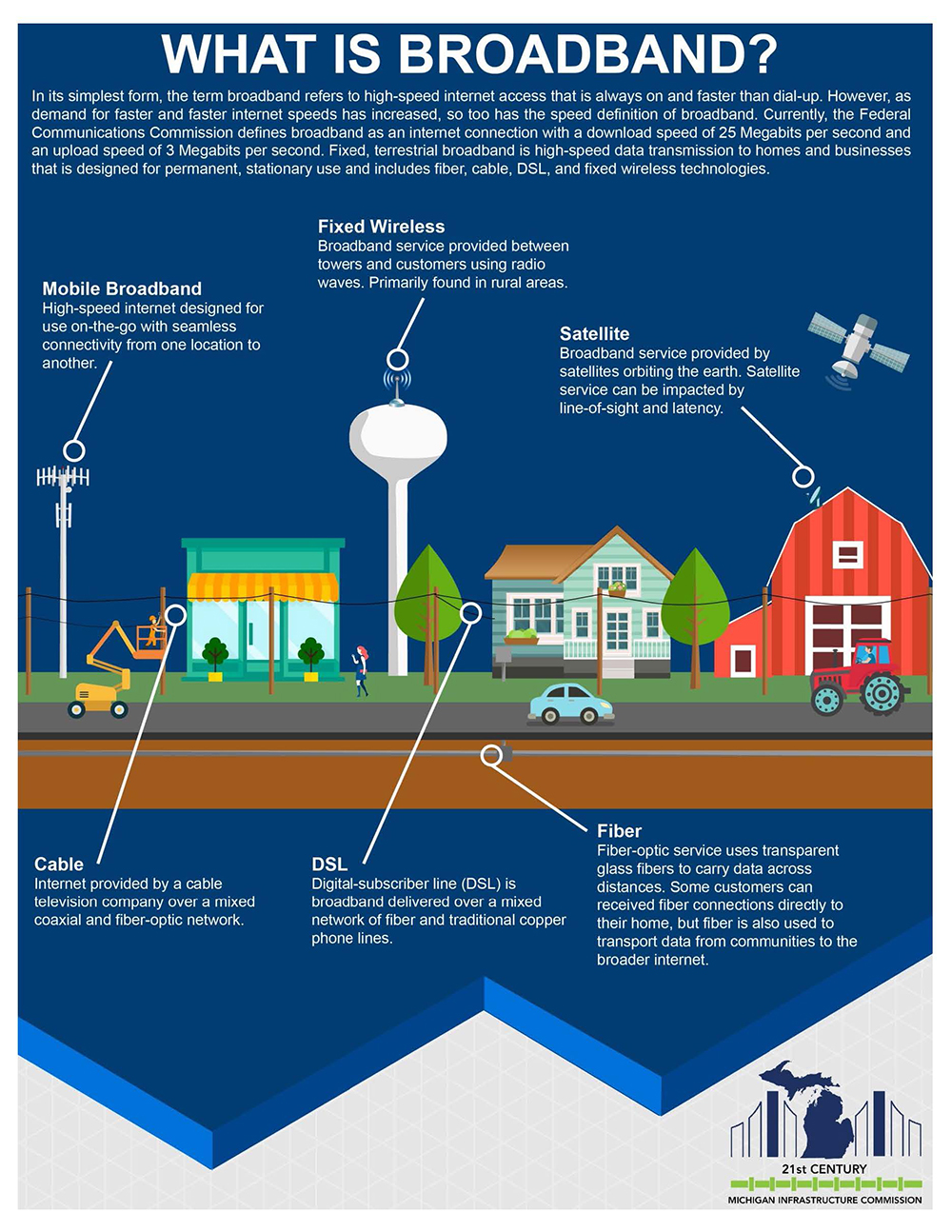
 Next Steps
Next Steps
 Broadband FAQ
Broadband FAQ
 Broadband Data Collection Survey Results
Broadband Data Collection Survey Results
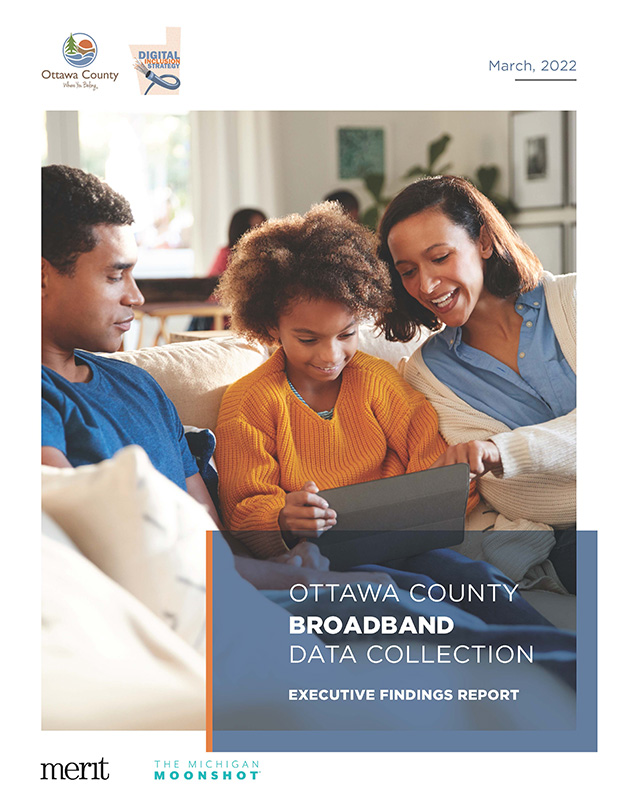
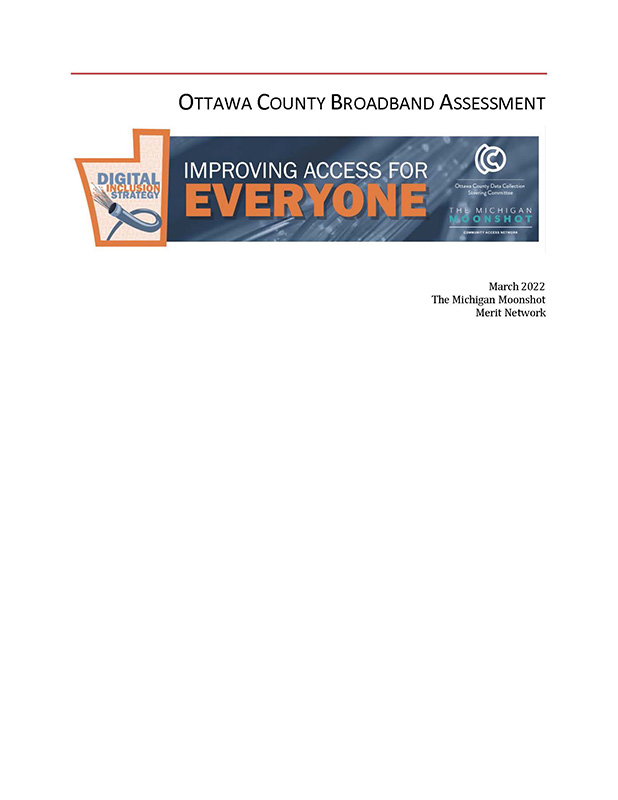
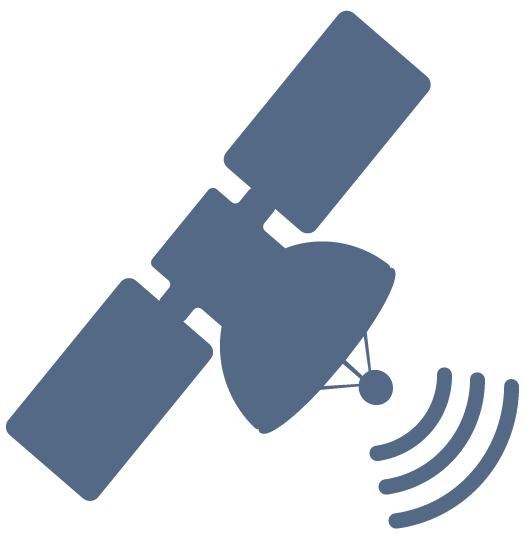 What About Satellite Internet Service?
What About Satellite Internet Service?
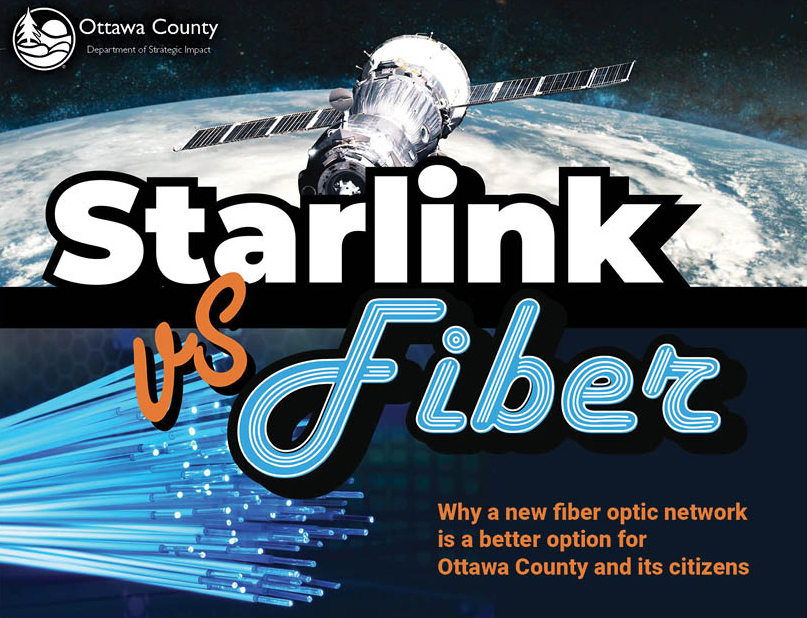
 Where We've Been
Where We've Been
 Continued Issues
Continued Issues
 The Digital Inclusion Strategy
The Digital Inclusion Strategy
 Resources
Resources
 Affordable Connectivity Program
Affordable Connectivity Program
 What is Broadband?
What is Broadband?
